02 Main Goals of Project
The main goal of the project can be divided into major components: urban, program, users, interior, ground history. From an urban level, the goal is to implement a Mediatech to develop the site and incorporate a fluid, continuous, and permeable infrastructure extending within, to, and throughout the other major institutions - National Museum, New National Museum - and urban cores - Václavské náměstí, Vrchlického sady, Náměstí Míru - within context. The Mediatech further expands on the cultural institutional typology as it stands as the sixth institution in the area. The goal of the architecture is to create an exhibit by placing multiple primary floors throughout the building forming residual spaces, and to produce an interior space that flows upwards throughout the building from street level and extends into its public space and cultural surroundings. Internally, the program’s goal is not defined by separate spaces but rather the flexibility of the spaces. The building’s extra-high ceilings on the multiple primary floors allow for additional mezzanines and level changes creating residual spaces. For the significance within the city the Mediatech acknowledges, understands, and builds upon the contextual history achieving an institution and public passage (pasáž) that exist in the surrounding context. The given criteria are expanded, elaborated, and synthesized in the following pages.
1. Urban ... 2. Program ... 3. Users ...
4. Interior ...
5. Ground ...
6. History ...
01 Prague, Czech Republic
“The Golden City”, “The City of a Hundred Towers” and “The Heart of Europe”
Prague, Czech Republic
Prague is the capital of the Czech Republic and the historical capital of Bohemia. Prague has a rich and diverse history that spans over a thousand years. Prague is home to 1.3 million people making it the largest city in the Czech Republic. Prague is the political, cultural, economic, and architectural hub of central Europe, with a rich history and influence known for its vibrant arts scene, stunning architecture, and lively atmosphere.
Throughout its history, Prague has been shaped by its diverse cultural influences, including Czech, German, Jewish, and other ethnic communities, resulting in a unique blend of architectural styles, traditions, and cultural heri-
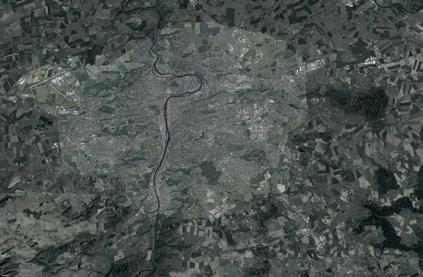

05 City Map Progression
Major Institutional Identities
Relating to the given site shown further in this booklet, the area has undergone many changes throughout the city’s history. The most notable changes in the area are listed on the following pages:
Medieval Period – Open Land/Fortification Entrance
1851-1900 – National Museum
1851-1900 – State Opera
1901-1909 – Historic Train Station
1923 – Czech Radio
1921-1940 – Prague Stock Exchange
1968-1973 – Federal Assembly Building
1972-1979 – New Terminal Hall

01 Given Site
Basic Data of Site
Location: Vinohrady, Prague 2, Czech Republic
Perimeter: 350 meters
Area: 5,850 sq meters
Elevation Difference: 6-8 meters
Address: Vinohradská 325/8, Římská 325/5, 120 00
Streets: Vinohradská, Římská, and Rubešova
Coordinates: 50°4 43.23” N, 14°26 0.71” E

02 Site Perspective


06 Topography




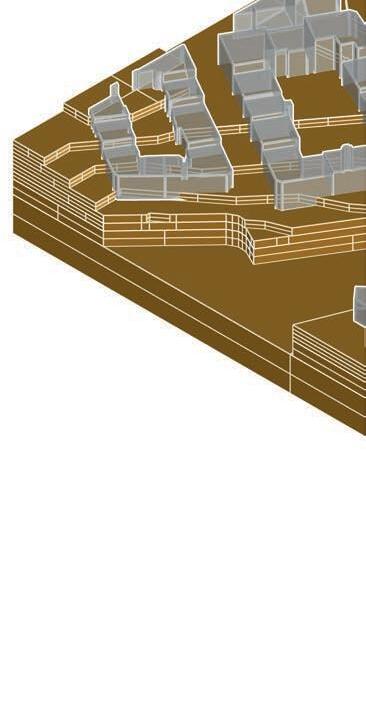




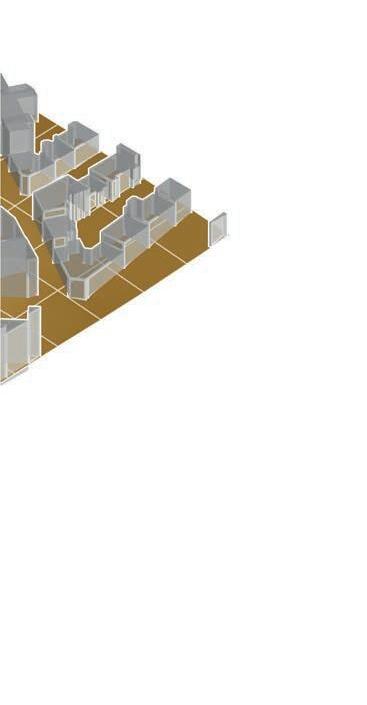


07 Site Sections


The given site is situated on a fairly uneven levelranging from an elevation difference of 8-10 meters. It is also situated above the railroad tracks coming to and from the main railway station as well as the A line metro.
The three railroad tunnels are located 6 meters below the ground level of the site and the metro tunnel is located 15 meters below the ground level of the site.
These restrictions limit the depth in which the site can go below ground, however at the south side of the site the building depth of the underground can reach minus 12 meters while the depth of the north side closest to the entrance of the railroad track tunnels can reach minus 3-6 meters. The depth restrictions are set for safety purposes as well as structural requirements.
The following pages show section drawings of the Czech Radio that is adjacent to the site. The drawings are shown as reference points for guidelines for the depth of the new building shown in the project. The depth of the new building is directly related to the structural restrictions close to the tunnels as well as the given depth of the adjacent Czech Radio.

08 Site Depth
The depth of the site is directly related to the context of the adacent building along with the previous depth of the Transgas Building. The depth of the front of the site can be a maximum of 3 meters deep and the depth of the back of the site can be a maximum of 7 meters deep. This deoth is to ensure that the architecture will sustain stability and structure and not interfere with the underground tunnels.
The given sections show the depth of the Czech Radio and the Transgas Building.
Depth
Front of Site: max 3 meters
Back of Site: max 7 meters



09 Contextual Interactions
The following four pages further ellaborate on the immediate interactions with the site and how the site is directly influenced. They are as listed:
- Node between Districts
- Neighboring Institutions
- Neighboring Cores
- Transportation Accessibility

09.1 Node Between Districts

Prague 1: Staré Město / Mala Strana
Mala Strana medieval settlement of Prague, Czech Republic. It was separated from the outside by the medieval fortification wall. The wall is now covered up by the streets Revoluční, Na Příkopě, and Národní—which remain the official boundary of the cadastral boundaryof Old Town (Prague 1). The district is known for its preservation and monumental architectural pieces from Prague’s history. It is highly trafficked with commuters, workers, residents, and tourists.
Prague 2: Vinohrady
The name Vinohrady means “vineyards”. The area was once covered with vineyards starting in the 14th century when Czech king Charles IV had them planted there. The vineyards lasted for some four hundred years and were later replaced by rose gardens, orchards, and residential buildings. The neighborhood is known for its lively atmosphere with many restauarnts, bars, cafes, shops, and other attractions.
Prague 3: Zizkov
Zizkov is a cadastral district of Prague. Prior to 1922, Žižkov was an independent city. It is situated south of Vitkov hill. Zizkov today is socioeconomically diverse. It is undergoing a renewal, with many older buildings being reconstructed and restored. The neighborhood consists of many residences and attractive pubs and restaurants for local residents.
Node
The three districts together are known to be desirable within Prague for its cultural activities and destinations. . The Mediatech’s location is situated at this prime location in the city center of Prague at the node of Prague 1, Prague 2, and Prague 3. They are known for having main institutions, selective amenities, great public transportation, and a high flow of people.

09.2 Neighboring Institutions
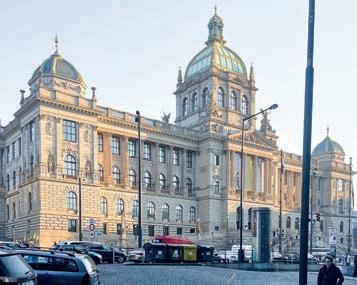
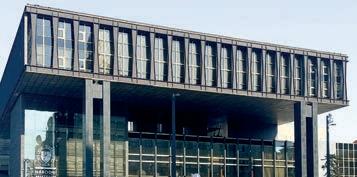

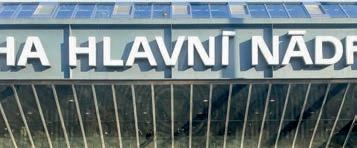

National Museum
The Prague National Museum was founded in 1889 by the Czech Count Kaspar Maria Sternberg, with the aim of promoting scientific and cultural knowledge. The museum’s collections initially focused on natural history, but over time, they expanded to include history, archaeology, art, and music.
New National Museum
The oldest part of the building was created in 1938 according to the project of the architect Jaroslav Rösler and served as the Prague stock market. In the 1960s the building was rebuilt and a superstructure by architects Karel Prager, Jiří Kadeřábek, and Jiří Albrecht was attached to the building. Since 2009 the building became a part of the National Museum.
State Opera
The Prague State Opera is one of the most prestigious opera houses in the Czech Republic. The style is neo-Renaissance designed by Austrian architect Karl Hasenauer. It is renowned for its diverse repertoire, including classical operas, operettas, ballets, and musicals from both Czech and international composers.
Main Train Station
The Main Train Station serves as a major transportation hub, connecting Prague to domestic and international destinations by rail. It features architecture characterized by its Neo-Renaissance facade and grand interior spaces. The station’s new main hall is has ornate details reflecting the architectural style of the late 19th century.
Czech Radio
The Czech Radio building is not only an architectural landmark but also a symbol of the importance of radio broadcasting in Czechoslovakia and later the Czech Republic. It has played a central role in the country’s cultural and political life, serving as a platform for news, music, entertainment, and public discourse.

9.4 Transportation Accessibility

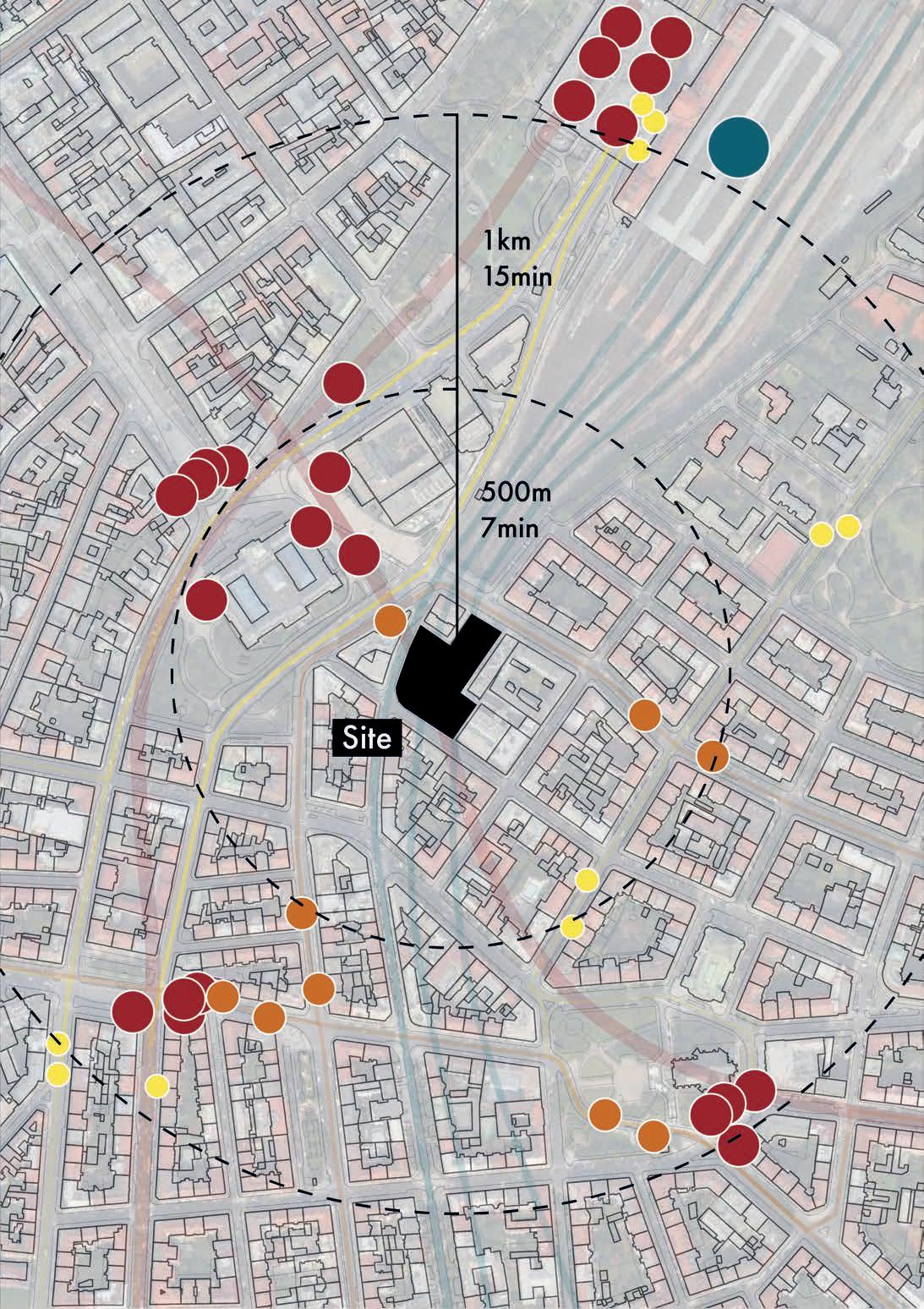
15 Perimeter Heights Map



















































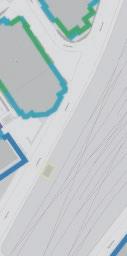


















































































































































16 Synthesis of Urban Analysis
After analyzing the given site, the key takeaways that helped define the concept and design of the project are described below:
The site is within an institutional zone in context as it directly relates to the 5 institutions in the area. This allows the execution of a sixth institution to compliment the contextual typlogy. At the same time, the sixth institution is not necessarily freestanding similar to most of the other institutions. The site rests within the typology of the traditional Vinohrady. It means that the architecture must compliment the blocks as well as the free standing institutions.
The architecture also has some design constraints that it must follow. The height of the building is limited to a maximum of 40 meters to correspond with the surrounding heights, and the depth of the architecture is limited to a maximum of minus 7 meters because of the underground tunnels.
These constraints can, at the same time, allows for concept development as it can be possible to bring people into the building through the mixed-use program and open public spaces within.
Because of the location the site experiences a high flow of traffic and has man accessible public transportation types and routes nearby the architecture should achieve brining users into the building as well as throughout the building.
V. PROPOSAL
01 Mediatech
“Mediatech” is a combination of “media” and “technology,” referring to the intersection of these two fields. It encompasses technologies, tools, platforms, and practices that are used in the creation, distribution, and consumption of all media related content. This can include various forms of media such as design, arts, television, film, music, publishing, gaming, virtual reality, augmented reality, and more.
Mediatech explores how technology influences the creation and dissemination of media content, as well as how media content shapes and drives technological innovation. It involves digital platforms, software, hardware, and networks that enable the production, distribution, and consumption of media in innovative and efficient ways.
Overall, Mediatech reflects the influence of media and technology in shaping modern lifestyles, social interactions, entertainment experiences, and information consumption. It highlights how individuals navigate and engage with digital technologies in their daily lives, adapting to and embracing the opportunities and challenges of the digital age.
Mediatech Functions
Users of the Mediatech are often highly connected through digital communication channels such as social media, messaging apps, email, computer programs, and video calls. They use platforms to stay in touch with friends, family, and colleagues, and to engage with online communities and networks of like-minded individuals. They consume a wide range of digital media content, including streaming videos, music, podcasts, eBooks, news articles, and social media posts. They access content through various devices such as smartphones, tablets, computers, smart TVs, streaming devices, and other digital platforms.
The tendencies of users involve using digital media and entertainment platforms for leisure and recreation. Users enjoy streaming movies and TV shows, playing video games, listening to music and podcasts, reading digital books, and engaging with online entertainment content. They rely on digital technologies to access information and stay informed about current events and personal topics of interest. They may use search engines, websites, social media, and content platforms to discover and consume information from a variety of sources and other individuals.
MEDIA + TECHNOLOGY = MEDIATECH
A High-Tech Digital Innovation and Transmission Center
01 Program of Project
Support (Floor -1, -2)
Parking 2000 m sq (100 spaces)
Technical Amenities
Plaza (Floor 0)
Permanent Exhibition/Lecture Hall 200 m sq
Auditorium 400 m sq
Cafe 200 m sq
Reception 100 m sq
Shop 200 m sq
Public Service Amenities
Information (Floor 1)
Administration Offices 1500 m sq
Computers 500 m sq
Kids 200 m sq
Reception 50 m sq
Library (Floor 2, 3, 4, 5)
Open Collection
Meeting Rooms 500 m sq
Talking Rooms
Studios 500 m sq
Labs 400 m sq
Presentation (Floor 6)
Cinema 300 m sq
Small Gallery 200 m sq
Large Gallery 300 m sq
Restaurant 400 m sq
Observation Deck
Total = ~ 18,100 m sq
02 Concept Diagram












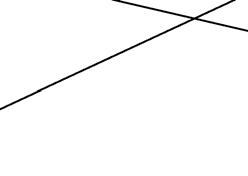
























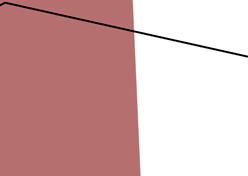
























































































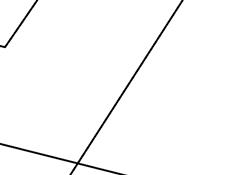







03 Form Process
Site
The given site based off the property line. The site faces three streets on three directions.
Height
The maximum height is 40 meters and is based on the surrounding context and institutions.
Adjust
The form is adjusted based on the adjacent buildings to provide sun and a passage.





































X. DRAWINGS
01 Masterplan

03 Floor Plans









06 Axonometric
Observation: Floors 8-10
Library: Floors 4-7
Information: 1-3
Plaza: 0
Support: -1--2
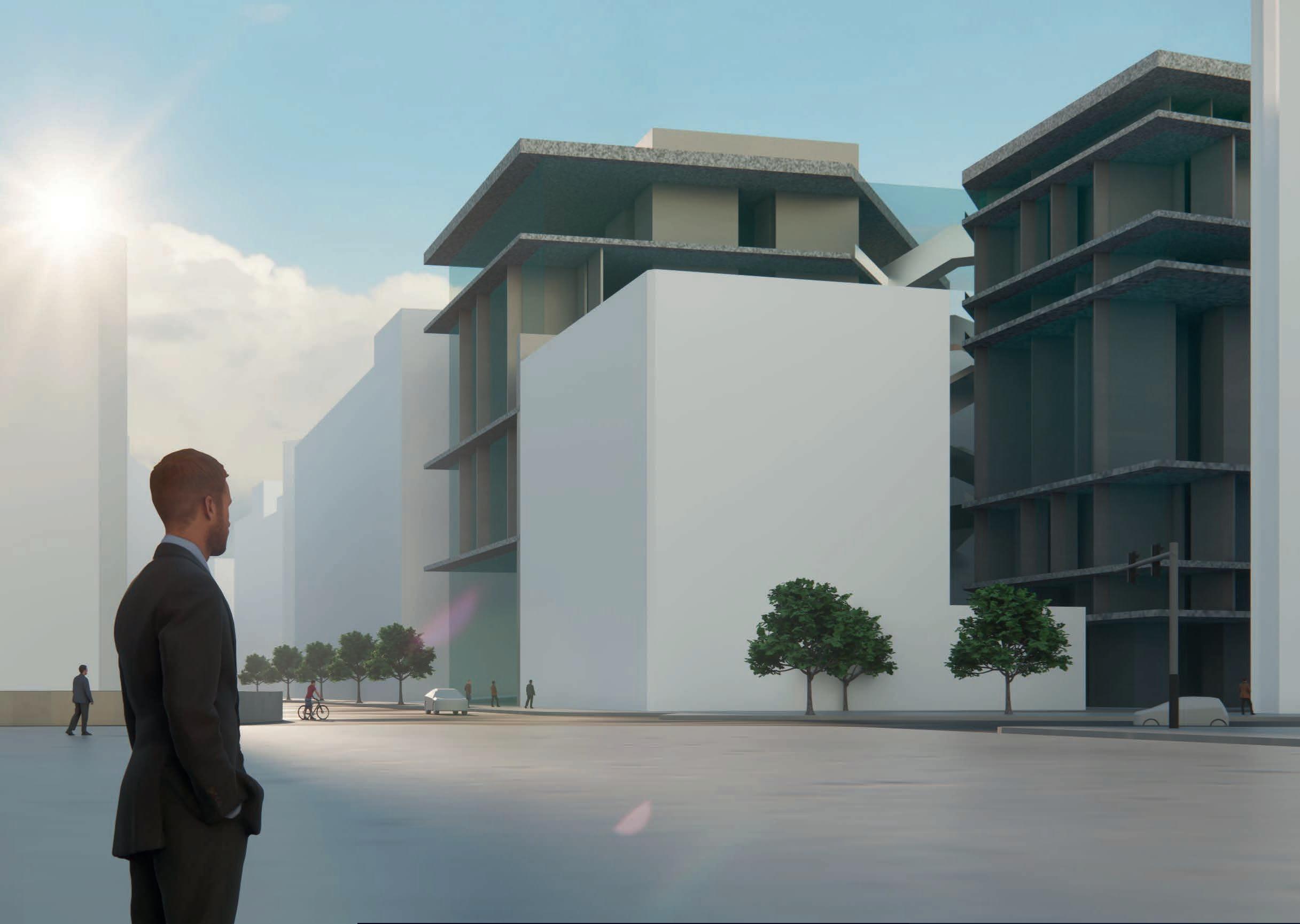



























































































































































































































































































































































01Conclusion
In conclusion, the project established a Mediatech in the heart of Prague within the institutional context creating the 6th institution as it builds upon the progression of the typological history. The function of the Mediatech is to provide significance in digital inclusion, support lifelong learning, promote innovation and creativity, strengthen cultural engagement, enhance economic development, and drive urban revitalization in Prague. As Prague continues to evolve and adapt to the challenges of the digital age, the Mediatech will remain as an essential hub for community empowerment, digital innovation, and social progress.
